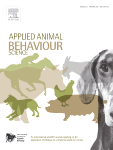Document type: scientific article published in Frontiers in Veterinary Science
Authors: Gíslína Skúladóttir, Ingrid Hunter-Holmøy, Clare Joan Phythian, Guro Myhrene, Adam Dunstan Martin
Preview: On-farm emergency slaughter (OFES) accounts for more than 4% of all cattle slaughter in Norway. The practice raises questions about animal welfare, public health, and the sustainability of cattle production. The objective of this study was to describe the reasons for OFES as stated on the OFES veterinary certificate. Veterinary certificates for OFES for each animal slaughtered in four chosen slaughterhouses from 4 months (January-April-July-October) in 2018 were transcribed into a database. Secondary data were extracted from national cattle databases and used to supplement primary data with information on breed, sex, and birth date. Breeds were divided into dairy and beef cattle. The reasons for slaughter were reported in text on the certificates and were categorized in the study into 5 reasons: recumbency, mammary gland, obstetrics, locomotion, and other, with a total of 20 subcategories for detail. In total, 2,229 forms were included in the study. Thirteen breeds were represented, although dominated by Norwegian Red within dairy and crossbred within beef. Of the cattle in the study, 46% were slaughtered for locomotion reasons, thereof almost half for lameness. Furthermore, 23% of the cattle in the study were slaughtered for recumbency and 17% for prolapse or dystocia. A higher proportion of dairy cows were slaughtered because of reasons related to mammary glands than beef cows, 10 and 2%, respectively. Almost 30% of beef cows were slaughtered for obstetrics reasons compared to 12% of dairy cows. The results of this study shed light on the reasons for OFES, which is highly relevant to greater discussions of sustainability in cattle production and animal welfare related to on-farm mortality.






